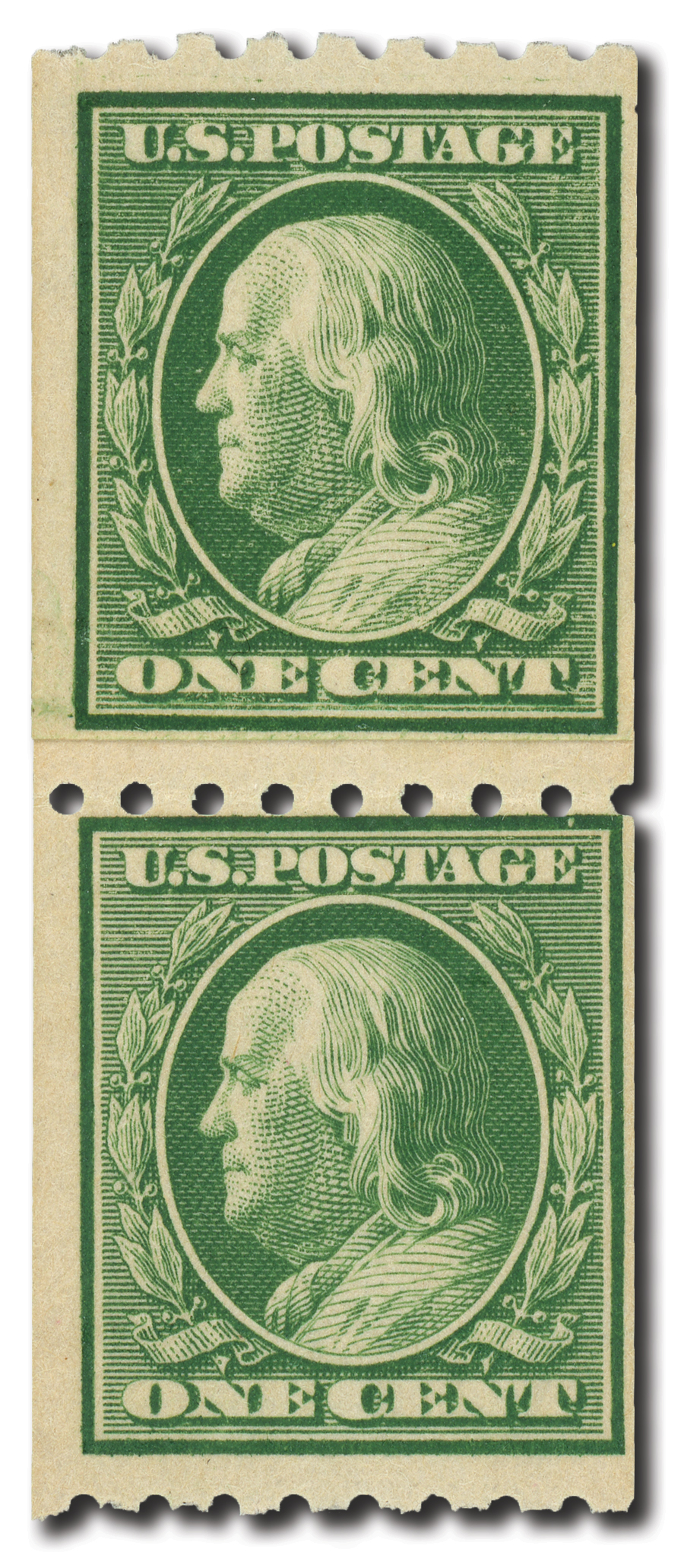Paste-Up Pairs: A Hidden Treasure in U.S. Coil Stamps
Posted by Mystic Stamp Co. on 10th Jul 2024
When delving into the fascinating world of US coil stamps, collectors occasionally come across a unique variety known as paste-up pairs. These intriguing items offer not only aesthetic appeal but also a glimpse into the historical production processes of postage stamps. Understanding paste-up pairs involves appreciating their origin, rarity, and the nuances that make them a prized addition to any collection.
The Origin of Paste-Up Pairs
Paste-up pairs emerged from the practical necessities of stamp production. In the early 20th century, coil stamps—stamps issued in a continuous strip, often used in vending machines and by businesses—became increasingly popular. These coils were created by pasting together strips of stamps cut from sheets. To ensure a continuous roll, the ends of the strips were manually joined with a small piece of paper known as the "paste-up" tab.
Identifying Paste-Up Pairs
A paste-up pair is identified by this distinct tab, which is visible between two adjacent stamps. Typically, one stamp in the pair will have a portion of the tab on its edge, while the adjacent stamp will show the rest of the tab. This feature distinguishes paste-up pairs from regular pairs of coil stamps, making them stand out in a collection.
Historical Context and Rarity
The production of paste-up pairs was common practice during the early 1900s, particularly from the 1910s to the 1920s. As stamp production techniques evolved and the need for manual pasting diminished, paste-up pairs became less common. Today, these pairs are considered rare, especially those from earlier issues and in pristine condition.
Collectors highly value paste-up pairs not only for their rarity but also for the historical insight they provide. They serve as tangible evidence of the manual processes involved in early stamp production, offering a direct connection to the craftsmanship and labor of the era.

Collecting Paste-Up Pairs
For those interested in adding paste-up pairs to their collection, there are a few key considerations:
- Condition: As with all philatelic items, the condition of paste-up pairs is crucial. Collectors should look for pairs with intact paste-up tabs and minimal damage or wear.
- Authentication: Due to their rarity, it's essential to ensure that paste-up pairs are authenticated by reputable experts. This verification process helps confirm the legitimacy and value of the stamps.
- Historical Significance: Understanding the historical context of the paste-up pairs in your collection adds depth to their value. Researching the specific issues and the production techniques of the time can enhance appreciation for these unique items.
The Appeal of Paste-Up Pairs
Paste-up pairs hold a special allure for collectors due to their uniqueness and the story they tell. Each pair is a testament to the ingenuity and manual labor that characterized early 20th-century stamp production. For enthusiasts of US coil stamps, paste-up pairs offer a rare and fascinating glimpse into a bygone era of philately.
In summary, paste-up pairs are more than just stamps; they are historical artifacts that enrich any collection. By understanding their origin, rarity, and the meticulous care involved in their production, collectors can truly appreciate the hidden treasures that paste-up pairs represent in the world of US coil stamps.

